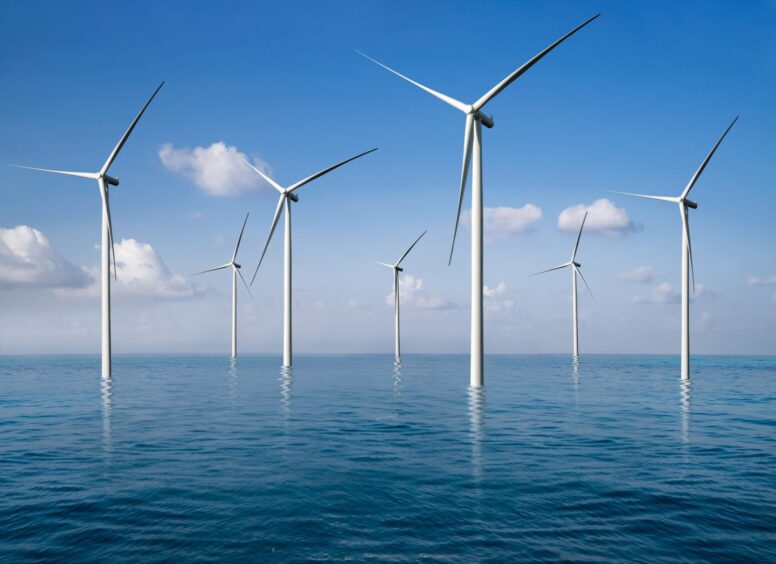
Colin Innes, partner in Property and Infrastructure of Shepherd & Wedderburn, discussed the role of offshore wind in reducing climate change emissions while also delivering security of energy supply.
Challenges and opportunities facing UK and Scotland’s offshore wind development
This last year has been a challenging one for the offshore wind sector, though both the UK and Scottish Governments have identified that offshore wind will play a critical role in reducing climate change emissions while also delivering security of energy supply.
After the energy shock caused by the Russian invasion of Ukraine, the UK Government uplifted the offshore ambition to 50GW of installed capacity by 2030. The Scottish Government, alongside Crown Estate Scotland, undertook further leasing rounds called ScotWind, and Innovation and Targeted Oil & Gas (INTOG). These collectively provided further leasing opportunities in excess of 30GW.
The Government’s contract for difference (CfD) auction, however, set a strike price that no offshore developer was prepared to bid into, which in itself will have delayed deployment. It is anticipated that the auction round opening up in May this year will be far more positive. It is important for the UK Government to maximise the opportunity that this auction round will provide, as a successful round will potentially deliver a real impetus and restore confidence. The offshore industry has not been immune from the pricing uncertainties driven by inflation, but this appears to be stabilising and this should be demonstrated in the prices set in this year’s auction round.
There has also been some positive news for Scotland. We have seen the lodging of the first application arising out of ScotWind West of Orkney and we have also very recently witnessed the consenting of the Green Volt floating application off the north east of Scotland. This is an INTOG project designed to decarbonise oil and gas operations and would be the largest commercial scale floating wind farm in the world. Additionally, there have been new applications made and positive consent decisions taken in the east coast of England.
One of the critical issues for the sector over the next period will be political leadership. Importantly, the UK Government and devolved administrations are all supportive of the offshore ambition, with an Offshore Wind Industrial Plan proposed by the Crown Estate and Industry published just last month. This sets out in detail the scale of opportunity that exists for the supply chain. Its implementation would require significant political leadership and co-ordination in this upcoming year, in which we are likely to see significant political change. The information has all been gathered and now, it’s in part up to Government as to whether collectively we can achieve the ambition.
It is clear that both Governments see the offshore wind sector’s potential to create significant employment opportunities. Both Scotland and the UK have a developed extensive supply chain that is expanding. There are significant opportunities both in the home markets and potentially abroad by exporting technology, equipment, and services.
However, last month Chris Stark from the Climate Change Committee criticised both the UK and Scottish Governments for their failure to deliver on their climate change objectives. He was keen to point out that the ambition was there, but the delivery was not matching it.
In 2022 the UK Government appointed Tim Pick as the UK Offshore Wind Champion and he undertook a comprehensive review of the industry and the opportunity that was being presented to both the UK and Scotland. Part of his role was to undertake wide consultation and then to make recommendations to the UK Government regarding key changes that would be critical to the successful delivery of the ambition.
His report was published in March 2023, with key actions identified. This built upon work from the Offshore Wind Acceleration Taskforce which had focused heavily on security of the manufacturing and supply chain. We are yet to see the full implementation of the Pick recommendations, although some of the matters relating to grid appear to be emerging in consultations. Grid remains a key constraint in terms of the timing of future delivery.
Pick also made specific recommendations to seek to try to facilitate and enhance the opportunities for floating wind. This key technology provides the ability to exploit wind resources in deeper water, which makes it crucial to further deployment both in Scotland, and England and Wales. It is in its infancy but the opportunity is huge, though it will require significant technology and new supply chain development.
Port and related infrastructure will be key to this development. There has already been a lot of activity in this space, but the delivery will require very significant upfront capital investment. A range of finance and investment models are being touted as the future in this area, but the proof will be in the pudding.
Learn more about the All-Energy event today.
Recommended for you
